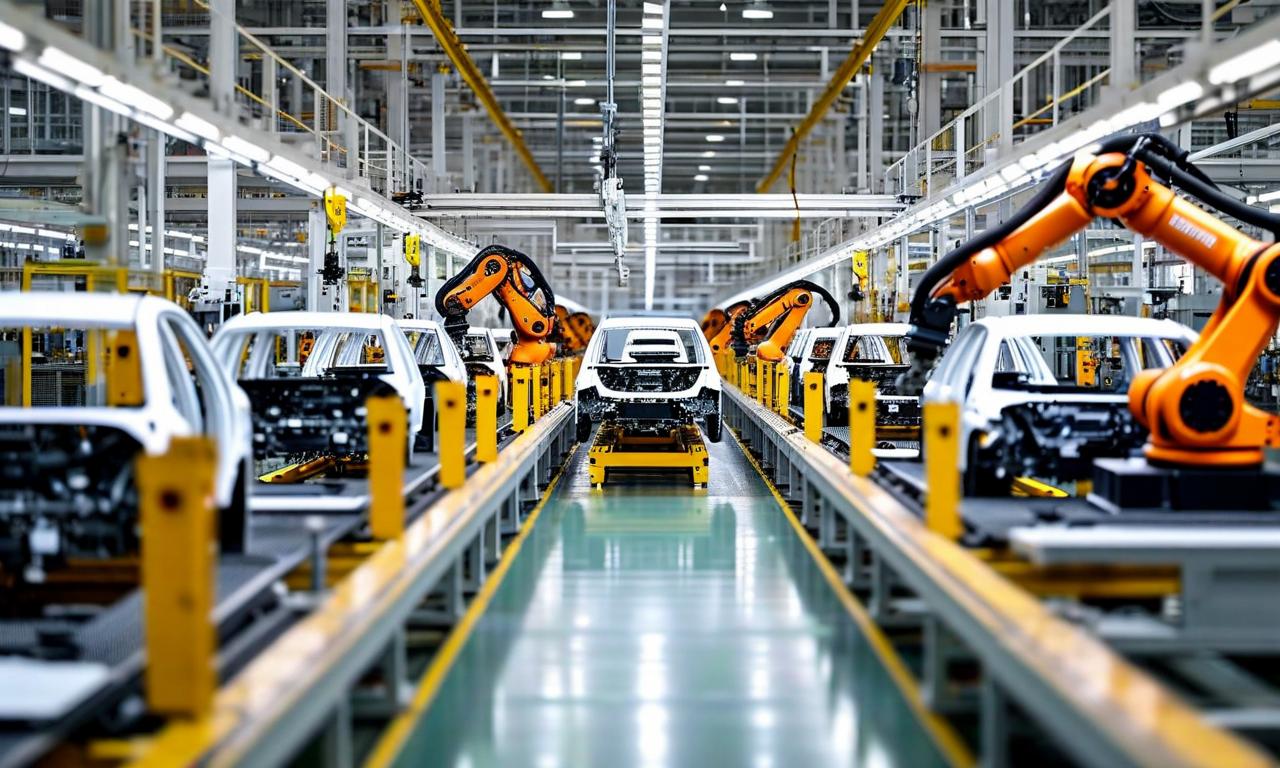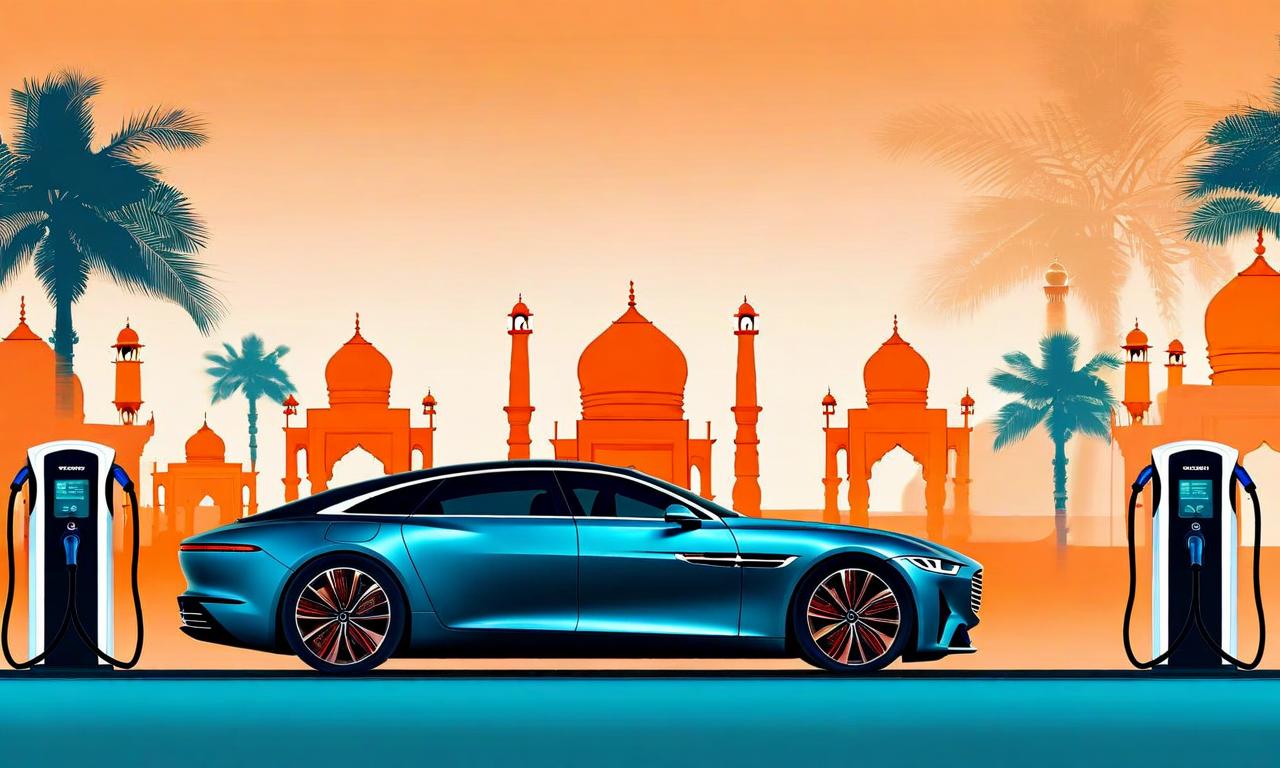Tata Motors Faces Challenges: Share Plunge and Vehicle Recall
Tata Motors is grappling with several issues, including a 44.60% drop in share price from its peak of Rs 1,179.00 to Rs 653.00. The company reported disappointing quarterly results with EBITDA and pre-exceptional PBT falling 37-41% year-on-year. Jaguar Land Rover, its luxury arm, is struggling with increased competition in China, higher warranty costs, and expenses related to electric vehicle transition. Additionally, Jaguar Land Rover North America has announced a recall of 121,509 vehicles in the US. The company's Indian operations are also losing market share and facing margin pressures. Jefferies has maintained an Underperform rating with a target price of Rs 550.00 and cut earnings estimates for FY2026-2028 by 8-15%.

*this image is generated using AI for illustrative purposes only.
Tata Motors , one of India's leading automotive manufacturers, is facing multiple challenges, including a significant share price decline and a large-scale vehicle recall in the United States.
Share Price Plummet
Tata Motors has seen its shares take a significant hit, plunging 44.60% from their record high of Rs 1,179.00 to Rs 653.00. This sharp decline comes in the wake of weaker quarterly results and mounting operational challenges across its various business segments.
Disappointing Quarterly Performance
The company's financial performance has fallen short of market expectations, with EBITDA (Earnings Before Interest, Taxes, Depreciation, and Amortization) and pre-exceptional PBT (Profit Before Tax) dropping by 37-41% year-on-year. These figures missed analyst estimates by 13-22%, indicating a more severe downturn than anticipated.
Jaguar Land Rover Faces Headwinds
Tata Motors' luxury vehicle arm, Jaguar Land Rover (JLR), is grappling with multiple challenges:
- Increased competition and consumption tax in China
- Higher warranty costs
- Expenses related to the transition to battery electric vehicles
These factors have contributed to an 11% decline in JLR wholesales, putting pressure on the company's overall performance.
Major Recall in the United States
Adding to the company's challenges, Jaguar Land Rover North America has announced a recall of 121,509 vehicles in the United States. The recall was announced through the National Highway Traffic Safety Administration (NHTSA). This significant recall could potentially impact the company's reputation and financial performance in the North American market.
Struggles in the Indian Market
The company's domestic operations are also facing difficulties:
- The India passenger vehicle business is losing market share and experiencing margin pressures
- Commercial vehicle demand remains weak, further impacting revenues
As a result, India PV volumes have declined by 10%, adding to the company's woes.
Financial Metrics Under Pressure
The operational challenges have taken a toll on Tata Motors' financial metrics:
- EBITDA margin contracted by 6.50 percentage points to 9.30%
- Overall wholesales and volumes have seen significant declines across segments
Analyst Outlook
In light of these developments, Jefferies, a prominent financial services company, has maintained an Underperform rating on Tata Motors with a target price of Rs 550.00. The firm has also cut its earnings estimates for the company by 8-15% for the fiscal years 2026-2028, reflecting a cautious outlook on Tata Motors' near to medium-term prospects.
Technical Analysis
From a technical perspective, the stock is currently trading below key moving averages. Analysts note that the share price is hovering near crucial support levels of Rs 640.00-650.00. If these support levels are breached, there is potential for further decline, with the next support range identified between Rs 600.00-550.00.
Conclusion
Tata Motors faces a challenging period ahead as it navigates through operational hurdles across its diverse business segments. The sharp decline in share price, coupled with the large-scale vehicle recall in the U.S., reflects investor concerns about the company's ability to overcome these challenges and return to a growth trajectory. As the automotive industry continues to evolve, particularly with the shift towards electric vehicles, Tata Motors' ability to adapt, innovate, and address quality concerns will be crucial in determining its future performance and stock market valuation.
Historical Stock Returns for Tata Motors
| 1 Day | 5 Days | 1 Month | 6 Months | 1 Year | 5 Years |
|---|---|---|---|---|---|
| +0.21% | +3.84% | +26.37% | +24.30% | +24.30% | +24.30% |

















































